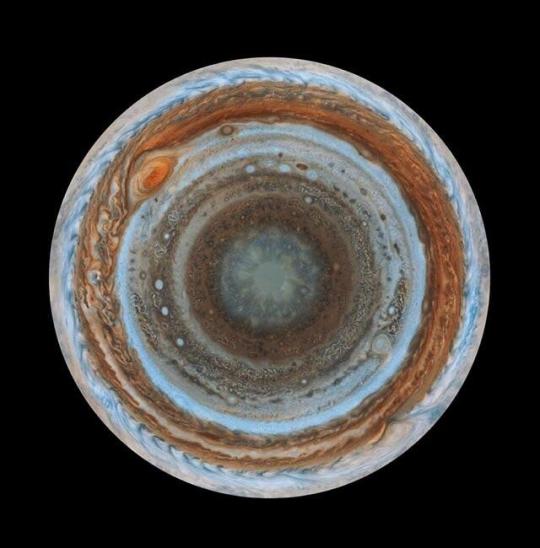Photo

A woman stands in the doorway near a wall with hand-painted art. Hand painting, “vernacular art and architecture in West Africa” is extremely popular, especially in Ghana, Nigeria, Burkina Faso and Mauritania, 1987-88 © Margaret Courtney-Clarke
996 notes
·
View notes
Photo

A vintage Senoufo’s mask shooted at the village in Burkina Faso for wä dé.
1K notes
·
View notes
Text
The scars of beauty.

The beauty of scars, unknown photographer
2K notes
·
View notes
Photo
CONNECTIONS440



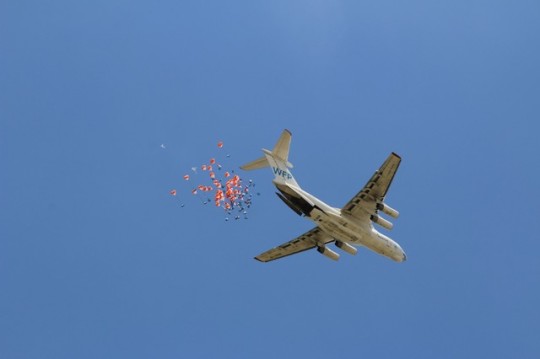
Aviation is an engine of global connectivity and a fundamental tool to achieve the Global Goals. All countries should have access to safe and reliable air transport. The International Civil Aviation Organization works to ensure no country is left behind when it comes to aviation standards. Find out more Thursday’s International Civil Aviation Day here: http://bit.ly/2fZAECW
22 notes
·
View notes
Text
Solar System: Things to Know This Week
Our Juno mission has been exploring Jupiter since July 2016 with a special passenger on board: JunoCam, an instrument designed to take spectacular close-up color images of the largest planet in our solar system. From the raw images, citizen scientists have processed a range of beautiful photographs that highlight Jupiter’s features, even turning them into works of art. Below, 10 stunning images JunoCam has given us over the past year.
1. Jovian tempest.
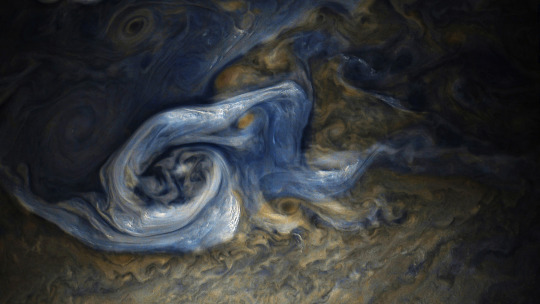
This color-enhanced image of a massive, raging storm in Jupiter’s northern hemisphere was captured by our Juno spacecraft during its ninth close flyby on Oct. 24, 2017. The storm is rotating counter-clockwise with a wide range of cloud altitudes, and the darker clouds are expected to be deeper in the atmosphere than the brightest clouds.
2. A southern stunner.

Jupiter’s southern hemisphere shows off in beautiful detail in this image taken on Oct. 24, 2017. The color-enhanced view captures one of the white ovals in the “String of Pearls,” one of eight massive rotating storms at 40 degrees south latitude on the gas giant planet.
3. Dreaming in color.
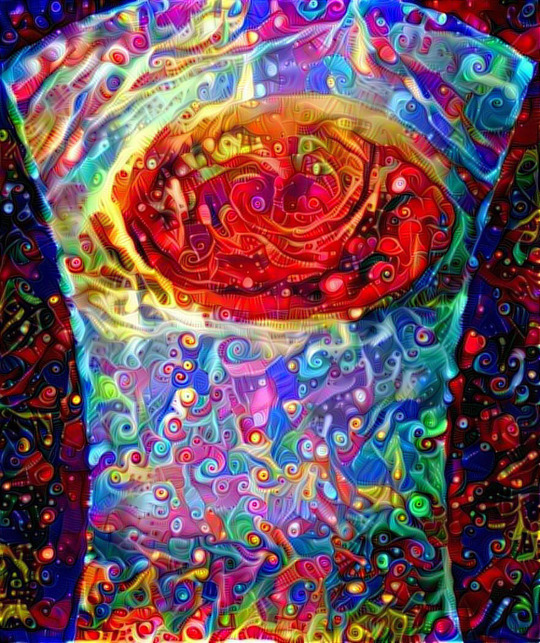
Artist Mik Petter created this unique digital piece using data from the JunoCam. The art form, known as fractals, uses mathematical formulas to create an infinite variety of form, detail, color and light. The original JunoCam image was taken on July 10, 2017.
4. Jovian moon shadow.
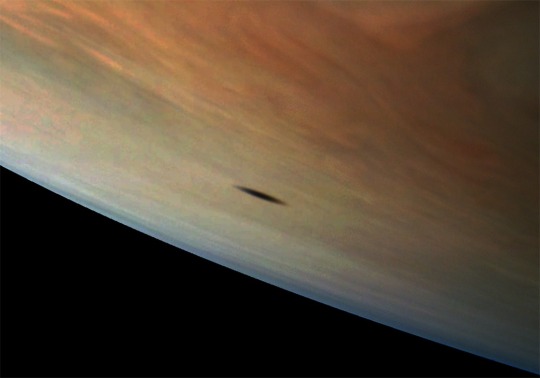
Jupiter’s moon Amalthea casts a shadow on the gas giant planet in this image taken on Sept. 1, 2017. The elongated shape of the shadow is a result of both the location of the moon with relation to Jupiter in this image as well as the irregular shape of the moon itself.
5. 95 minutes over Jupiter.

Once every 53 days, Juno swings close to Jupiter, speeding over its clouds. In about two hours, the spacecraft travels from a perch over Jupiter’s north pole through its closest approach (perijove), then passes over the south pole on its way back out. This sequence shows 11 color-enhanced images from Perijove 8 (Sept. 1, 2017) with the south pole on the left (11th image in the sequence) and the north pole on the right (first image in the sequence).
6. Soaring high.
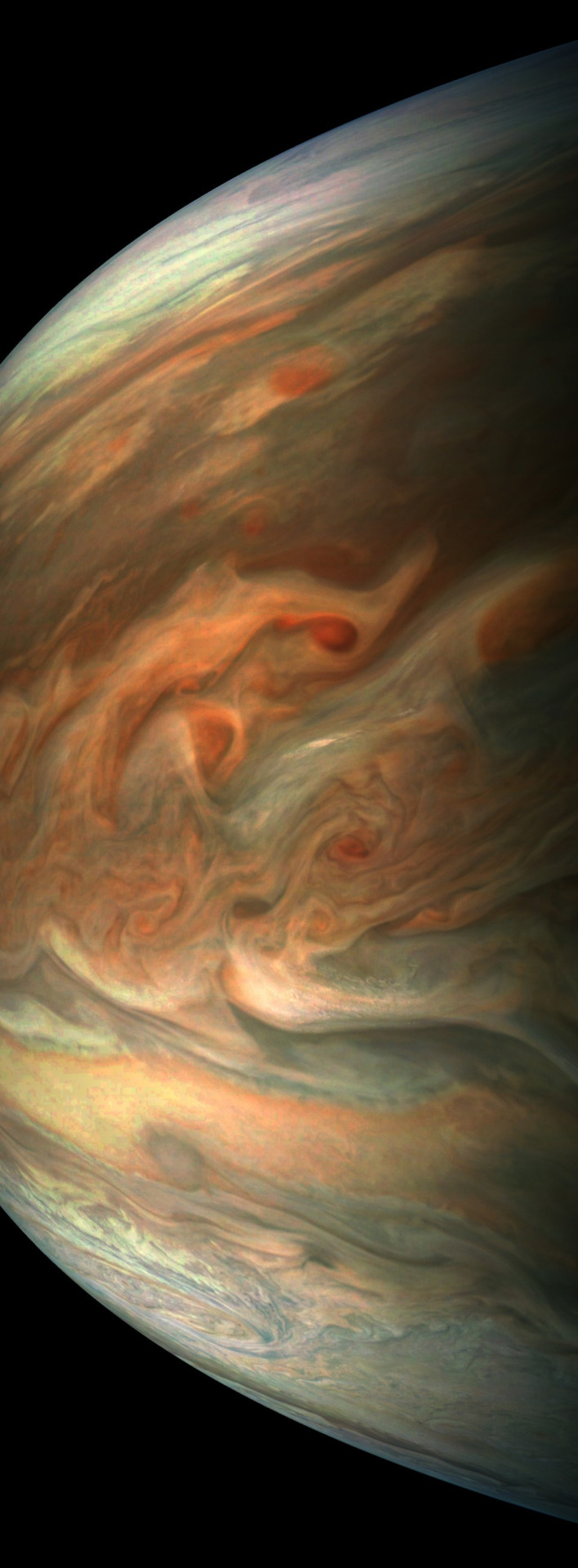
This striking image of Jupiter was taken on Sept. 1, 2017 as Juno performed its eighth flyby. The spacecraft was 4,707 miles (7,576 kilometers) from the tops of the clouds of the planet at a latitude of about -17.4 degrees. Noteworthy: “Whale’s Tail” and “Dan’s Spot.”
7. In true color.
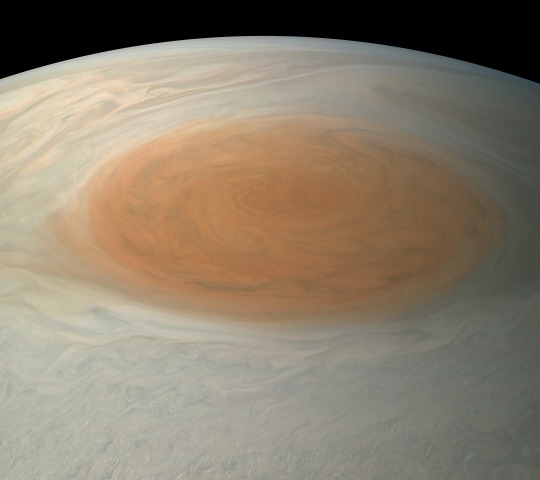
This true-color image offers a natural color rendition of what the Great Red Spot and surrounding areas would look like to human eyes from Juno’s position. The image was taken on July 10, 2017 as the Juno spacecraft performed its seventh close flyby of Jupiter.
8. The ‘face’ of Jupiter.
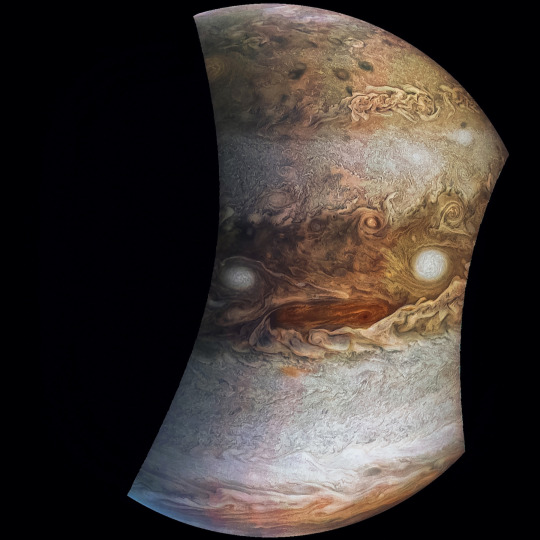
JunoCam images aren’t just for art and science—sometimes they’re created for a good chuckle. This image, processed by citizen scientist Jason Major, is titled “Jovey McJupiterface.” By rotating the image 180 degrees and orienting it from south up, two white oval storms turn into eyeballs, and the “face” of Jupiter is revealed. The original image was taken by the Juno spacecraft on May 19, 2017.
9. Bands of clouds.
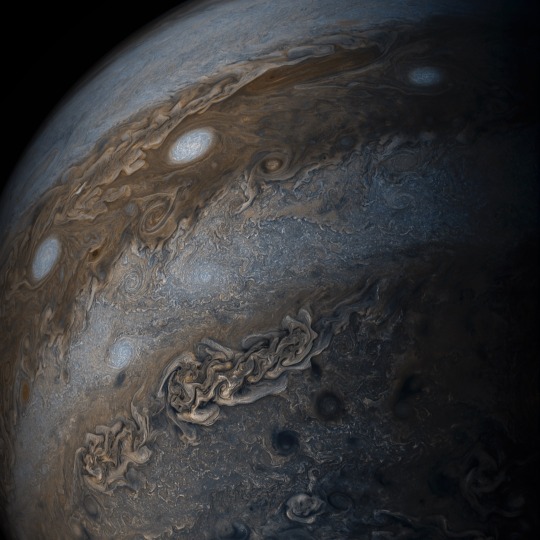
This enhanced-color image of Jupiter’s bands of light and dark clouds was created by citizen scientists Gerald Eichstädt and Seán Doran. Three of the white oval storms known as the “String of Pearls” are visible near the top of the image. Each of the alternating light and dark atmospheric bands in this image is wider than Earth, and each rages around Jupiter at hundreds of miles (kilometers) per hour. The lighter areas are regions where gas is rising, and the darker bands are regions where gas is sinking. Juno captured the image on May 19, 2017.
10. The edge.

This enhanced-color image of a mysterious dark spot on Jupiter seems to reveal a Jovian “galaxy” of swirling storms. Juno captured this image on Feb. 2, 2017 and citizen scientist Roman Tkachenko enhanced the color to bring out the rich detail in the storm and surrounding clouds. Just south of the dark storm is a bright, oval-shaped storm with high, bright, white clouds, reminiscent of a swirling galaxy. As a final touch, he rotated the image 90 degrees, turning the picture into a work of art.
To learn more about the Juno mission at Jupiter, visit: www.nasa.gov/juno.
Follow the Juno mission on Facebook, Instagram and Twitter.
Make sure to follow us on Tumblr for your regular dose of space: http://nasa.tumblr.com.
5K notes
·
View notes
Photo










Front Pages: Japan’s Attack on Pearl Harbour
Above are the front pages from newspapers around the world, these are the headlines and reports that the Allied countries woke up to on December 8th, 1941. With Japan’s attack on Pearl Harbour the US was brought into the war. All eight US battleships stationed at Pearl Harbor were heavily damaged or destroyed and more than 3,500 casualties were suffered, with 68 civilian killed.
Front pages:
The News & Observer, Raleigh N.C. (source)
The New York Times (source)
The Daily Mirror, UK (source)
Manitowoc Herald Times, Wisconsin (source)
The Los Angeles Times (source)
New York World-Telegram (source)
The Observer, UK (source)
Seattle Post Intelligencer (source)
Daily News, New York (source)
992 notes
·
View notes
Link
Check out @MaxCRoser’s Tweet:
0 notes
Photo
Where's the paper industry located, I wonder.

Map of the amount of forest coverage in each US state.
1K notes
·
View notes
Photo

Black Friday is also Buy Nothing Day, where participants protest consumerism by not purchasing anything for at least 24 hours. People have also been known to stage sit ins, cut up their credit cards, wander around shopping malls as zombies, or host used winter coat exchanges. Source
2K notes
·
View notes
Text
Let’s Talk About Food...in Space!
It’s Thanksgiving time…which means you’re probably thinking about food…
Ever wonder what the astronauts living and working on the International Space Station eat during their time 250 miles above the Earth? There’s no microwave, but they get by using other methods.
Here are some fun facts about astronaut food…
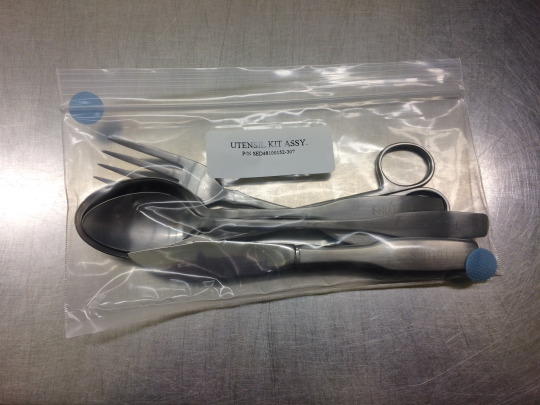
Astronauts are assigned their own set of silverware to use during their mission (they can keep it afterward too). Without a dishwasher in orbit, they use special wipes to sterilize their set between uses, but it’s still better for everyone if they keep track of and use their own! So many sets of silverware were ordered during the space shuttle program that crews on the space station today still use silverware engraved with the word “shuttle” on them! So #retro.

You probably know that astronauts use tortillas instead of bread to avoid crumbs floating everywhere. Rodolfo Neri Vela, a payload specialist from Mexico, who flew on the space shuttle in 1985, introduced tortillas to the space food system. Back then, we would buy fresh tortillas the day before launch to send on the 8-10 day space shuttle missions.
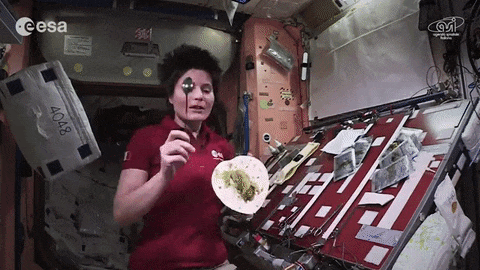
We then learned how to reduce the water activity when formulating tortillas, which coupled with the reduction of oxygen during packaging would prevent the growth of mold and enable them to last for longer shuttle missions. Now, we get tortillas from the military. In August 2017, acting NASA Administrator Robert Lightfoot ate a meal that included tortillas from 2015!
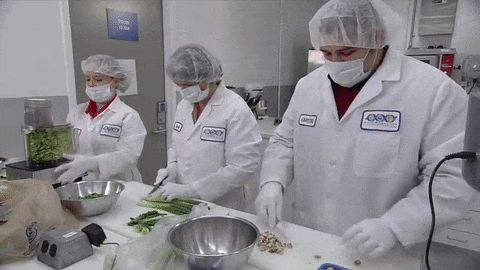
Our food menu is mostly all made from scratch so it can meet the requirements of the nutrition team and ensure astronauts eat enough fruits and vegetables. The space station is stocked with a standard menu that includes a mix of the more than 200 food and drink options available. This ensures lots of variety for the station crews but not too many of each individual item.
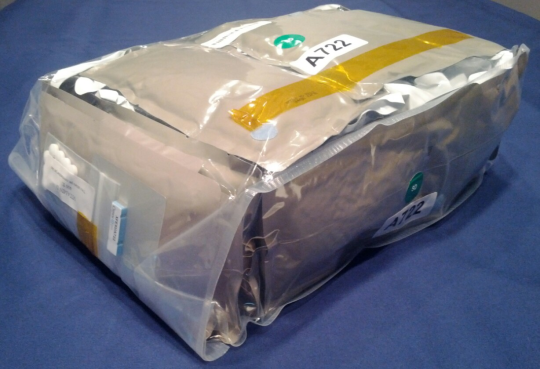
The food is packaged into bulk overwrap bags, referred to as BOBs, which are packed into cargo transfer bags for delivery to the space station. Each astronaut also gets to bring nine personalized BOBs for a mission, each containing up to 60 food and drink options so they can include more of their favorites – or choose to send a few specific items for everyone to share on a particular holiday like Thanksgiving. As a result, the crew members often share and swap their food to get more variety. Astronauts also can include any food available at the grocery store as long as it has an 18-month shelf life at room temperature and meets the microbiological requirements.

Fresh fruit and vegetables are a special treat for astronauts, so nearly every cargo resupply mission includes fresh fruit and veggies – and sometimes ice cream!

The Dragon spacecraft has freezers to bring science samples back to Earth. If there is space available on its way to orbit, the ground crew may fill the freezer with small cups of ice cream or ice cream bars.

Some food arrives freeze-dried, and the astronauts rehydrate it by inserting a specific amount of hot or ambient water from a special machine.
Other food comes ready to eat but needs to be reheated, which crew members do on a hot-plate like device. We recently also sent an oven style food warmer to station for the crew to use. And of course, some food like peanuts just get packaged for delivery and are ready to eat as soon as the package is opened!
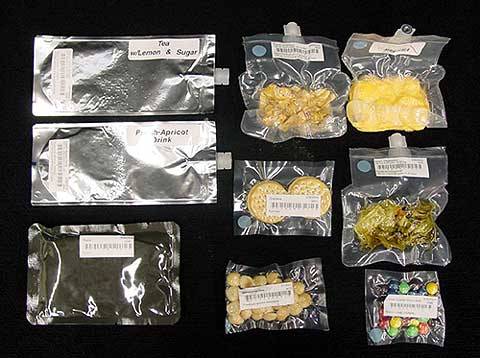
Our nutritional biochemists have discovered that astronauts who eat more fish in space lost less bone, which is one of the essential problems for astronauts to overcome during extended stays in space. In the limited area aboard the space shuttle, not all crew members loved it when their coworkers ate the (aromatic) fish dishes, but now that the space station is about the size of a six-bedroom house, that’s not really a problem.
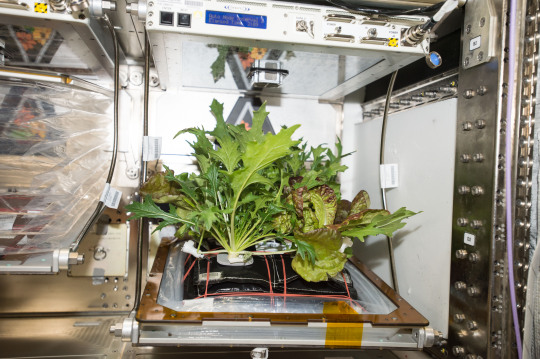
Astronauts on station have had the opportunity to grow (and eat!) a modest amount of fresh vegetables since the first lettuce harvest in August 2015, with new crops growing now and more coming soon. Crew members have been experimenting using the Veggie growth chamber, and soon plant research will also occur in the new Advanced Plant Habitat, which is nearly self-sufficient and able to control every aspect of the plant environment!
Growing food in space will be an important component of future deep space missions, and our nutritionists are working with these experiments to ensure they also are nutritious and safe for the crew to eat.
Thanksgiving in Space
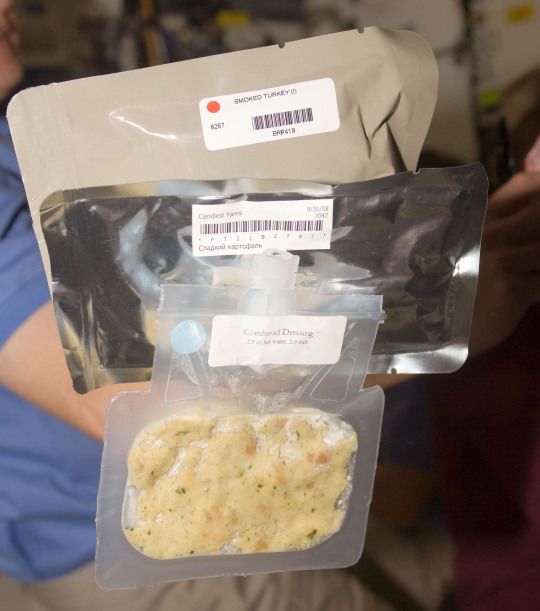
The crew on the space station will enjoy Thanksgiving together. Here’s a look at their holiday menu:
Turkey
Mashed Potatoes
Cornbread Stuffing
Candied Yams
Cran-Apple Dessert
Learn more about growing food on the space station HERE.
Make sure to follow us on Tumblr for your regular dose of space: http://nasa.tumblr.com.
20K notes
·
View notes
Photo
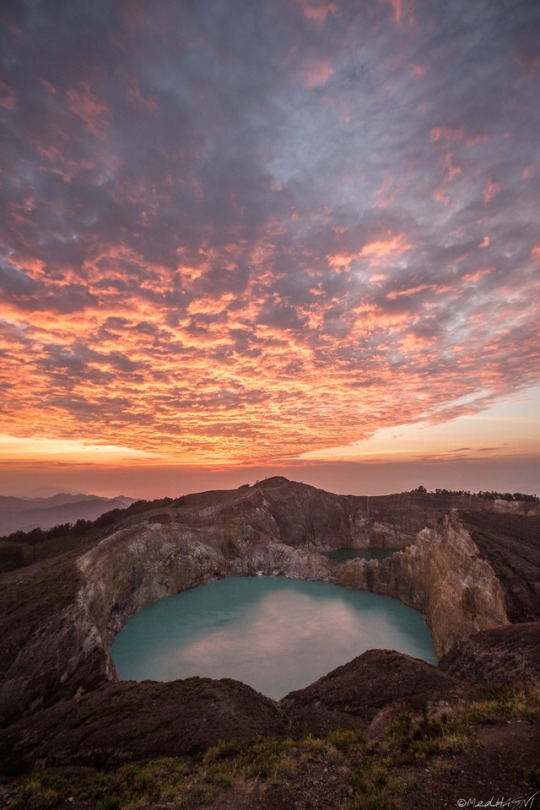
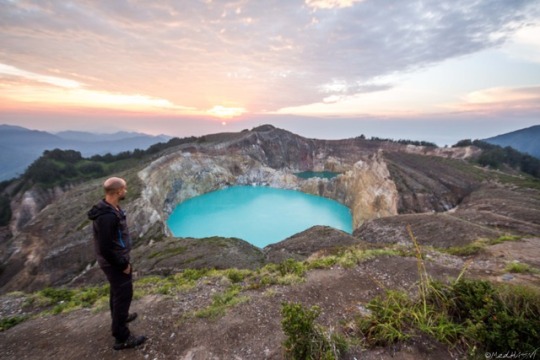


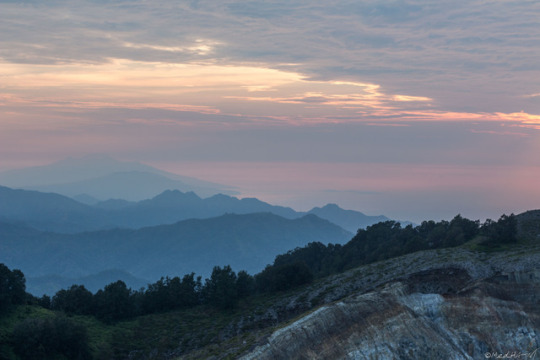

kelimatu, Flores, 11/2017 (Indonesia 9th step in my trip around the world)
395 notes
·
View notes
